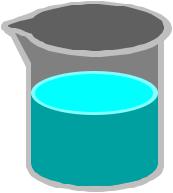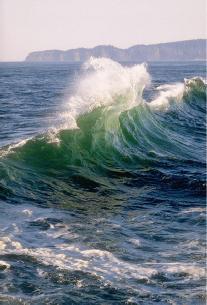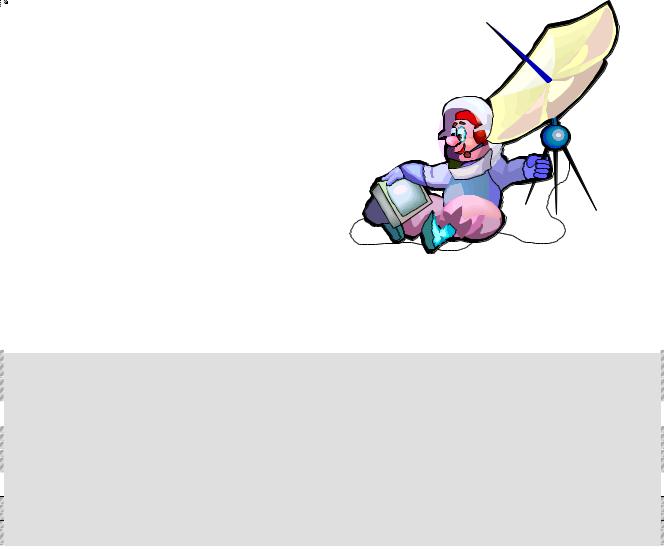
- •LESSON 1
- •TEXT A. PROPERTIES OF WATER
- •TEXT B. THE MOST IMPORTANT CHEMICAL SUBSTANCE
- •TEXT C. THE WATER PROBLEM
- •LESSON 2
- •TEXT A. HYDROGEN PEROXIDE
- •TEXT B. PROPERTIES OF HYDROGEN PEROXIDE
- •TEXT C. HYDROGEN
- •LESSON 3
- •TEXT A. OXIDES OF NITROGEN
- •TEXT B. OXIDES
- •TEXT C. PROPERTIES OF NITROGEN
- •LESSON 4
- •TEXT A. PURIFICATION OF WATER
- •TEXT B. WATER
- •TEXT C. CHEMISTRY
- •LESSON 5
- •TEXT A. SODIUM
- •TEXT B. FLUORINE
- •TEXT C. A. MOISSAN (1852-1907)
- •LESSON 6
- •TEXT A. NITRIC OXIDE, NO
- •TEXT B. NITRIC ACID, HNO3
- •TEXT C. HYDROGEN
- •LESSON 7
- •TEXT A. CLASSIFICATION OF ORGANIC COMPOUNDS
- •TEXT B. MAGNESIUM
- •ЛЕКСИЧЕСКИЕ ТЕСТЫ
- •Список выражений, рекомендуемых для работы с текстом или статьей:
- •Список выражений, рекомендуемых для монологического высказывания:
- •Лексика необходимая для ведения беседы по тексту, статье:
- •Сокращения, принятые в английской литературе:
- •Существительные, образующие мн. число не по правилу:
- •VOCABULARY

TEXT B. THE MOST IMPORTANT CHEMICAL SUBSTANCE
Water is hydrogen oxide, a compound of hydrogen and oxygen. It can be made if hydrogen or hydrogen containing substances are burnt in air or oxygen.
Most of the world’s water is liquid but an important fraction is solid, as ice or snow. Many mineral substances contain water of
crystallization (e.g. copper sulfate) and in the atmosphere there are millions of tons of water vapour. Clouds consist of minute droplets of water or crystals of ice.
Water dissolves a very large number of substances and it is the most important solvent. It does not dissolve greasy, fatty substances or most plastics. It was established that ordinary water is impure, it contains dissolved salts and gases and sometimes organic matter.
For chemical work water is to be purified by distillation. Pure water is colourless, tasteless, and odourless. Rain water is nearly pure water, containing only small proportions of dust and dissolved gases.
When the chemists had examined the properties of water, they found that physical properties of water could be used in many physical constants and units. The freezing point of water (saturated with air at 1 atm pressure) is taken as 00 C and the boiling point is of water at 1 atm is taken at 1000 C. The unit of volume in metric system is chosen so that 1 ml of water at 3.980 C (the temperature of its maximum density) weighs 1.0000 g/cm3.
So water is one of the most important of all chemical substances. It is a main constituent of living matter and of the environment in which we live.
Words:
droplet – капелька
greasy – жирный, сальный fatty – жирный
dust – пыль saturate – насыщать define – определять
environment – среда окружение
7

EXERCISES AND ASSIGNMENTS
Exercise 1. Прочитайте текст и ответьте на вопросы.
1.What is water?
2.How is water made in the lab?
3.Where can water be found in nature?
4.What is pure water? What is rain water?
5.Where can the physical properties of water be used?
Exercise 2. Выразите свое согласие или несогласие с данными утверждениями.
1.Water dissolves greasy, fatty substances and most plastics.
2.Ordinary water is not pure.
3.Water is the most important chemical substance.
4.Water is a hydrogen oxide.
Exercise 3. Найдите и переведите предложения, в которых говорится о:
1)способе получения воды в лаборатории;
2)распространении воды в природе;
3)о физических свойствах воды.
Exercise 4. Какая новая информация о воде содержится в тексте ?
TEXT C. THE WATER PROBLEM
Water is the most common of all liquids and the most useful. Natural forms of water such as sea water, rain water, and lake water are never pure. Consumption of water increases annually, millions of tons are used each day in industry, so there exists a water problem. The solution of this problem will be using sea water, because seas cover about 70 percent of Earth’s surface.
Sea water varies in composition, it contains many solids dissolved in water. Sodium chloride, common salt, is the most abundant of the solids present. We can easily understand that distillation of sea water will give pure water and leave the solids in the distillation vessel which can be also used. The difficulty is to carry out this operation
8
economically. To satisfy the great demands of industry, much fuel will be needed for making this distillation. However, using the Sun as the source of heat sea water has successfully been purified in some countries in recent years.
Words:
сonsumption – потребление annually – ежегодно
vessel – сосуд
to satisfy the demands – удовлетворять потребности fuel – топливо
vary – изменяться, но very – очень
EXERCISES AND ASSIGNMENTS
Exercise 1. Прочитайте текст за 4-5 минут, не пользуясь словарем. Скажите, о какой проблеме идет речь и как она может быть решена?
Exercise 2. Расскажите о других способах очистки воды, известных вам. Какие новые сведения о воде вы получили, прочитав тексты
A, B, C ?
* * *
Exercise 1. Переведите.
1.There are all kinds of various test tubes in the chemical laboratory.
2.There was some but not much water in the glass.
3.There will be still more new synthetic materials in future.
4.Is there any dust in pure hydrogen peroxide?
5.There exist more compounds of hydrogen than of any other element.
6.There were many interesting events (события) at our University last year.
7.There were no mistakes at their works.
8.Are there English books at your library?
9.There are many interesting subjects at out curriculum.
10.There will be tests and examinations in winter.
11.There are several laboratory tables with chemical glassware at the laboratory of inorganic chemistry.
12.What glassware is on every laboratory bench?
Exercise 2. Переведите данные сочетания, обращая внимание на существительное в функции определения.
9

Radio wave length, electricity generation methods, steel plate, oxidation states, hydrogen preparation method, thermonuclear fusion reaction, boilingpoint determination, atmosphere pressure determination, rain water composition, hydrogen chloride dissolution, non-metal oxides, acid anhydrides application, alkali water solutions, glass production, metal surface treatment, computer simulation method, Solutions Chemistry Institute.
Exercise 3. Найдите в словаре значения следующих пар слов:
Form (n), to form (v.) Change (n) , to change (v) light (adj.), light (n)
Переведите предложения, обращая внимание на перевод выделенных слов в зависимости от части речи. Определите время сказуемого.
1.They found quartz in the form of large, nearly perfect crystals.
2.Quartz, silicates and aluminosilicates together with other minerals form a great amount of ceramic raw materials.
3.Among ceramic products, alumina in both forms possesses the highest mechanical strength and hardness.
4.This is an example of chemical change, since a chemical change results in permanent changes of properties.
5.The properties of this substance change when we heat it.
6.He studies the change from one state to another.
7.The colour of the solution changed after the reaction.
8.The experimental temperature changed between room temperature and 1.40000 C.
9.Great changes took place at our laboratory.
10.Antimony does not react with nitric acid to form oxides.
11.The article dealt with the changes which took place during the reaction.
12.Ceramic products are light in weight.
13.The velocity of light is very high.
14.Aluminium is a very light metal.
15.Our laboratory is very big and light.
Exercise 4. Составьте предложения из следующих слов. Скажите, чем выражены в них подлежащее и сказуемое. Определите время глаголов.
1)the, of, these, students, two, attend, the, departments, lectures, same.
2)Will, it, does, not, we, employ, method, what, our, in, work, matter.
3)Matter, varieties, is, of, the, branch, which, science, deals, with, different, or, substances, chemistry.
10

4) Are, the, reactions, chemical, that, processes, the, into, substance, substances, other.
5)A.Lavoiser, later, concept, the, introduced, the, of, elements, chemical.
6)Our, products, recently, produced, have, synthetic, product, many, new.
7)Your, in, chemistry, study, of, learn, will, you, things, many, substances, about, compounds, chemical, materials, and, physical, properties, changes, chemical, reactions, many, and interesting, other, things, important, and.
8)Russian, science, M. Lomonosov, devoted, to, his, life, development, the, of.
Exercise 5. Найдите в данном тексте все глаголы и определите их временную форму.
THE ONSET OF COLOUR TELEVISION
In 1940, Peter Carl Coldmark, an engineer for Columbia Broadcasting System, demonstrated a colour television system that used a rotating threecolour disk. Coldmark thus proved the
practicability of colour television, although his system was later replaced by an all-electronic colour television
that was compatible with black-and- white transmission.
In spite of all these successes, television did not come into its own as a medium until 1948. Since then,
television has had a tremendous influence on industrialized societies. As
a source news and entertainment, it is
the centrepiece of the expanding market of consumer electronics.
Проверьте себя. Знаете ли вы следующие слова?
Chemist, chemistry, to consider, water, element, to decompose, substance, to consist of, hydrogen, oxygen, to unite, pure, proportion, property, volume, ordinary, temperature, liquid, colour, colourless, thin, thick, layer, to boil, boiling-point, pressure, high, low, to freeze, to undergo, to act, to influence, compound, form, to form, change, to change, catalyst, to combine, combination, to attend, to evolve, evolution, quantity, steam, alkali metals, sodium, potassium, to attack, non-metals, to react, reaction, carbon, silicon, fluorine, chlorine, steam, vapour.
11
